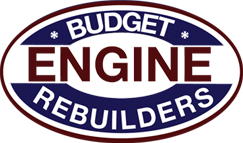Recommended Installation Instructions For Rebuilt Engines
YOU MUST BE A QUALIFIED ENGINE INSTALLER
SPECIAL NOTE – USE OF ABRASIVES OF ANY KIND ON ANY OF THE ENGINE PARTS YOU ARE INSTALLING, INCLUDING SURFACE CONDITIONING PADS/DISCS OR SAND BLASTED PARTS ARE ABSOLUTELY FORBIDDEN
- Inspect engine carefully to make sure you have received the correct engine, (gaskets and oil pump) if applicable and that no damage has been caused during shipping. Before installing any parts on the engine, check to make sure that all necessary bolt hole bosses, engine sensor locations, etc. for your application are correct.
- Thoroughly clean and inspect all engine components you are installing. Check for debris (which may be lodged in intake manifold), cracks, defects, misalignment, etc. Use a gasket scraper only on gasket surface areas.
- Inspect exhaust manifolds, catalytic converter and the complete exhaust system to the tailpipe making sure there are no restrictions.
- Clean and inspect fuel injection system, carburetor and fuel filter thoroughly, replacing parts as needed. Make sure carbon is removed from carburetor or throttle body base plate, EGR port and heat risers in intake manifold.
- Check all electrical components such as ignition system, computer for stored fault codes, broken or non-functioning engine sensors, frayed wiring harness or bad connections. All computer controlled components and pollution control devices provided by the manufacturer must be in place and functioning properly or engine damage will occur.
- Inspect water pump for wear, replace as needed. Have radiator professionally pressure tested and checked. Replace thermostat and all fluid related hoses for cooling system.
- Use new gaskets when installing parts and apply sealer sparingly only where needed. DO NOT USE EXCESSIVE AMOUNTS OF SILICONE SEALER which may break off and cause oil system failure.
- It is recommended that you install a new oil pump pickup screen, and use a good quality engine oil and oil filter. Change the oil and oil filter after the first 500 miles and then every 3,000 miles after that. Use the oil viscosity and antifreeze coolant recommended by the vehicle manufacturer.
- Prime the oil pump before starting the engine. Refer to a motor shop manual for instruction if needed for your application. Adjust valves if applicable.
- Budget Engine Rebuilders does not diagnose engine driveability problems. A professional automotive technician should be consulted immediately if an engine driveability problem exists causing the engine to run incorrectly when you make your first road test. Engine damage could quickly result if you operate the vehicle under these conditions.
